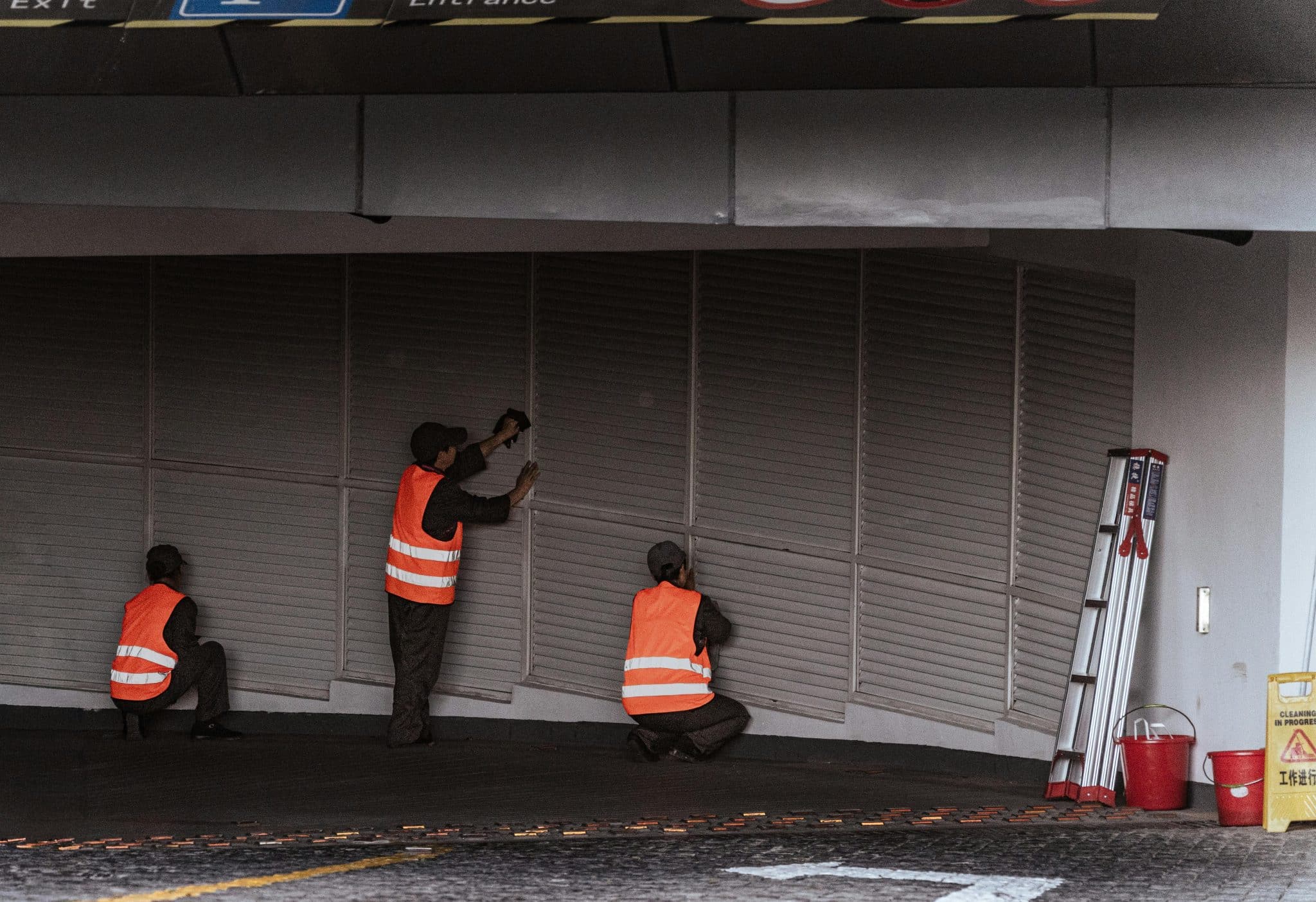Looking at your packed garage floor, you might feel there’s no space left for storage.
Many homeowners face this common problem, but the solution is right above your head.
The ceiling of your garage holds untapped potential that most people overlook.
Studies show that a typical garage ceiling can provide up to 192 square feet of extra storage space, yet less than 30% of homeowners use it.
Want to free up your garage floor while keeping seasonal items, sports gear, and storage bins within reach?
Simple ceiling storage solutions can double your available space.
This guide will teach you practical methods to create safe, lasting overhead storage.
We’ll share tested building plans, material lists, and step-by-step instructions to help you maximize your garage space effectively.
Required Materials And Tools
Materials Needed
| Detail | Information |
|---|---|
| 2×2 Lumber for Horizontal Supports | 18 pieces for complete installation |
| 2×4 Lumber for Vertical Braces | 8 pieces |
| ½-inch Plywood Sheets | 4 sheets |
| 3-inch Screws for Wall and Ceiling Mounting | – |
| 2½-inch Screws for Framework Assembly | – |
| 1⅝-inch Trim Head Screws for Plywood Attachment | – |
| Wood Glue for Joint Strengthening | – |
Tools Required
| Detail | Information |
|---|---|
| Measuring Tape | 25ft minimum |
| Level | Laser level preferred for long walls |
| Pencil | Carpenter’s pencil best |
| Power Drill | Cordless, 18V+ |
| Drill Bits | Pre-drill set |
| Screwdriver | Phillips’s head |
| Miter Saw | 10-inch blade |
| Safety Glasses | Full coverage |
| Work Gloves | Non-slip grip |
| Step Ladder | 6-foot minimum |
| Stud Finder | Magnetic/electronic |
| Speed Square | 7-inch metal |
| Jigsaw | For notch cuts |
| Line Laser | Optional for wall alignment |
| Clamps | Quick-release type |
Planning Your Ceiling Storage Project
Before starting your ceiling storage build, careful planning helps prevent costly mistakes and ensures a safe, useful storage system.
Let’s look at the key planning steps you need to consider.
Assessing Your Space
Take exact measurements of your ceiling height. A good method is to leave at least 31¾ inches between the ceiling and the top shelf. This allows enough room for two standard storage bins stacked on top of each other.
Check your wall structure to find sturdy support points. Use a stud finder to mark every wall stud – these will be crucial attachment points for your storage system.
Look for potential obstacles like:
-
- Garage door tracks and mechanisms
- Light fixtures
- Existing electrical wiring
- Ventilation ducts
DIY Garage Ceiling: Step-By-Step Guide
Step 1 – Preparation Phase
Start by clearing your garage completely.
You’ll need easy access to both walls and ceiling.
Use a stud finder to locate and mark all wall studs and ceiling joists with a pencil.
Draw level lines on your walls at 31¾ inches from the ceiling – this marks where your horizontal supports will go.
Note any pipes, wires, or fixtures that might interfere with your storage system.
A clean, well-marked workspace simplifies the following steps and helps prevent mistakes during installation.
Step 2 – Building The Framework
Begin by cutting your 2×2 lumber to length for horizontal wall supports.
Pre-drill and partially insert 3-inch screws into these boards at your marked stud locations – this makes mounting much easier.
Mount the 2x2s to your walls, ensuring they’re level and properly aligned with your marks. Next, attach ceiling 2x2s directly into the joists.
Cut your 2×4 vertical supports to size, pre-drill holes, and mount them between the wall and ceiling supports using 2½-inch screws.
Add wood glue to all joints for extra strength.
Step 3 – Adding Storage Surfaces
With your framework secure, measure and cut your ½-inch plywood to fit between the vertical supports.
Each piece should rest securely on the bottom 2×2 support and fit snugly between wall and vertical supports.
Use 1⅝-inch trim head screws to attach plywood to the framework, spacing screws every 12 inches around the edges and through the middle.
Trim head screws sit flush with the plywood surface, preventing storage bins from catching when sliding them on and off the shelves.
Step 4 – Safety Checks And Final Adjustments
Test your newly installed storage system by gradually adding weight, starting with empty storage bins.
Check all joints and mounting points for any signs of movement or stress.
Ensure all screws are fully tightened and that the plywood shelving sits flat without any warping.
Ensure adequate clearance for your storage bins to slide in and out without catching.
If you notice any wobbling or instability, add additional support points or reinforce existing ones before loading the shelves with items.
Video Tutorial
Attached is a tutorial video from Crafted Workshop on a DIY ceiling garage storage idea.
Mistakes To Avoid When Building Garage Ceiling Storage
1. Height Measurement Errors: One of the most common mistakes occurs during the planning phase. Always account for the thickness of your support beams and storage bins.
Leave enough space between shelves and the ceiling for easy bin removal.
Many builders forget about the bottom 2×2 support beam, which can make sliding bins in and out difficult.
The ideal spacing is 31¾ inches from ceiling to shelf bottom, plus extra clearance for the support structure.
2. Structural Support Issues: A solid foundation is key to safe ceiling storage.
Many DIY builders make the mistake of skipping proper wall stud locations or missing ceiling joists during installation.
Always pre-drill holes to prevent wood splitting, use appropriate screw lengths for different connections, and ensure even weight distribution across the entire structure.
The strongest setup combines correctly placed screws with wood glue at every joint.
3. Material Selection Problems: Quality materials form the backbone of durable storage systems.
Choosing thin plywood leads to sagging shelves, while warped lumber creates unstable structures.
Smart builders select straight boards, use trim head screws for smooth surfaces, and buy 10% extra materials for inevitable cutting mistakes.
Remember that saving money on lower-quality materials often leads to costly repairs later.
4. Installation Missteps: Proper installation requires patience and attention to detail.
Working alone on ceiling mounts increases risk and difficulty.
Check levels repeatedly, mark all stud locations clearly, and wear proper safety gear throughout the project.
Using a laser level for alignment and having a helper hold board during mounting makes the process significantly safer and more accurate.
Conclusion
Creating ceiling storage in your garage opens up a world of organization possibilities.
With careful planning, appropriate materials, and meticulous attention to detail, you can create a secure and durable storage solution that effectively doubles your available space.
Just a friendly reminder: success comes from taking your time with measurements, choosing high-quality materials, and keeping safety guidelines in mind every step of the way!
Ready to start your garage storage project?
Begin by measuring your space today.
Take photos of your garage ceiling, mark the stud locations, and make a list of items you plan to store.









